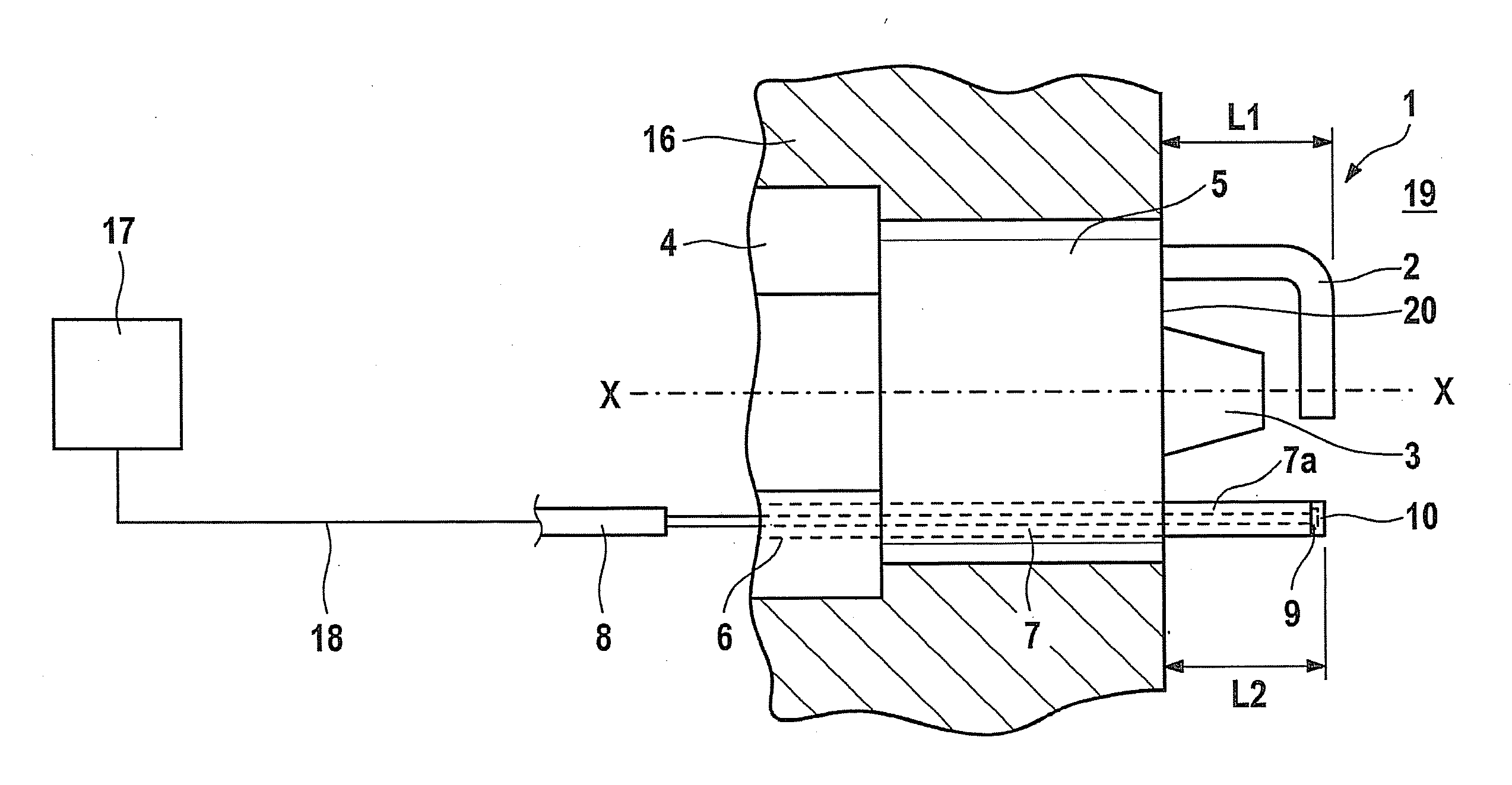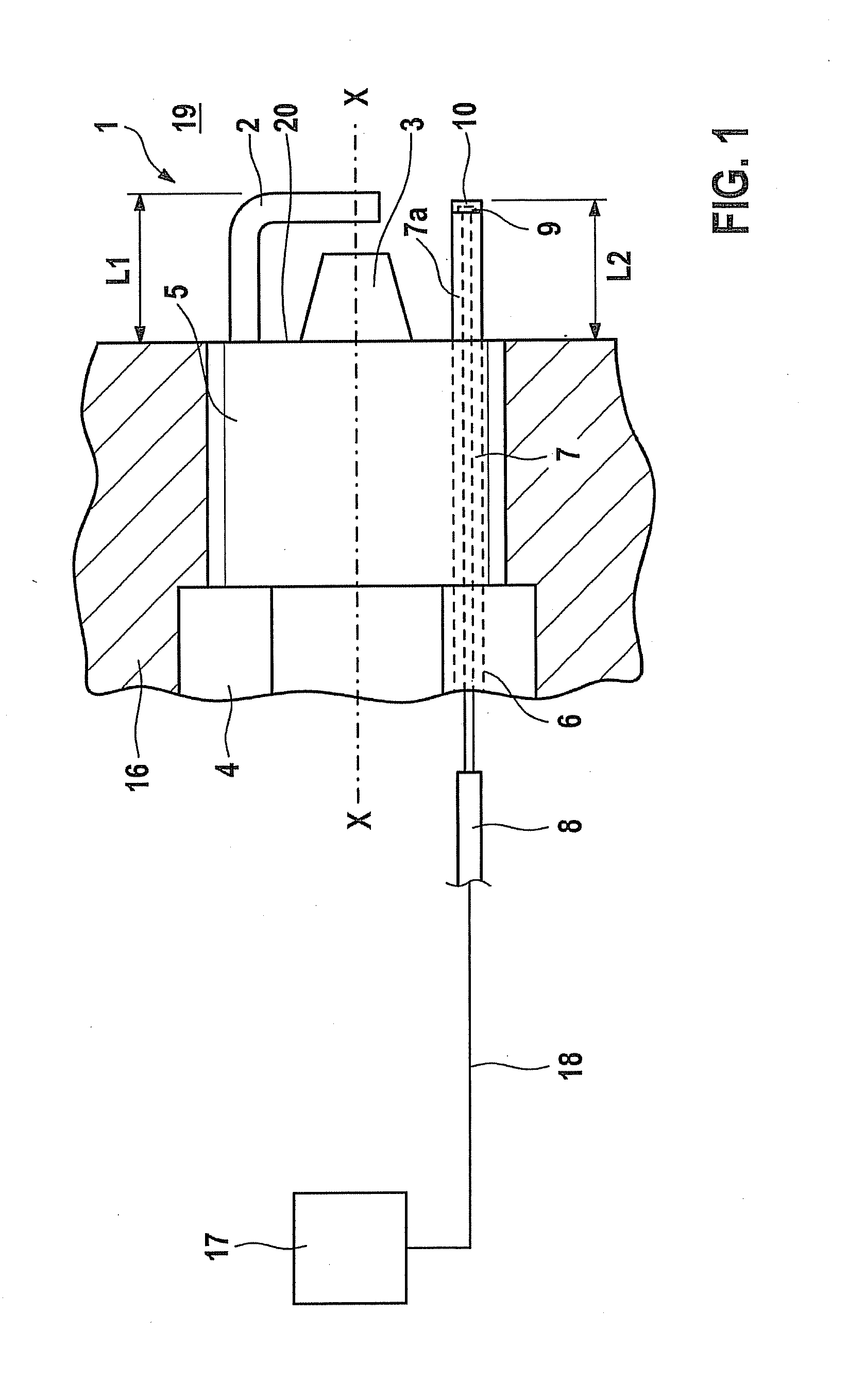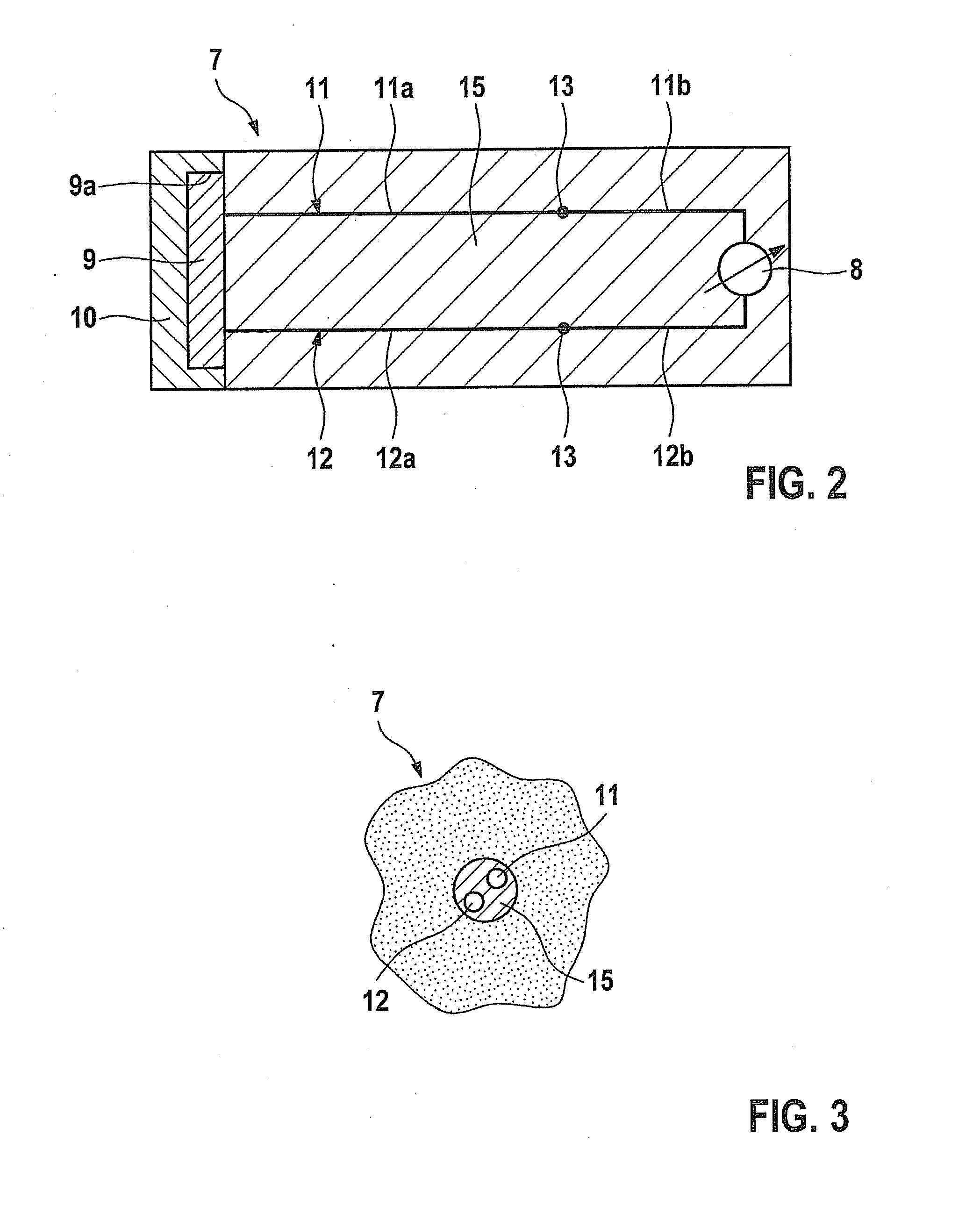Spark plug having a thermosensor
a thermosensor and spark plug technology, applied in the field of spark plugs, can solve the problems of inability to accurately measure the temperature conditions directly in the combustion chamber, and the change in temperature in the center electrode may be detected only slowly, so as to improve the control or and the in-engine control and regulation of the internal combustion engine excellent
- Summary
- Abstract
- Description
- Claims
- Application Information
AI Technical Summary
Benefits of technology
Problems solved by technology
Method used
Image
Examples
Embodiment Construction
[0019]A spark plug 1 according to a preferred exemplary embodiment of the present invention is described in detail below with reference to FIGS. 1 to 3.
[0020]As FIG. 1 shows, the spark plug is designed in the known manner in general, including a ground electrode 2, a center electrode 3, a shell 4 and a housing 5 provided on the shell for fixation of spark plug 1 in a cylinder head 16. Furthermore, spark plug 1 according to the present invention has a thermosensor 7, which is situated in a borehole 6 in the spark plug. Borehole 6 is formed in shell 4 of the spark plug.
[0021]As FIG. 1 also shows, thermosensor 7 is connected to a control unit 17 by a connecting line 18. Control unit 17 receives signals from the thermosensor and controls or regulates the combustion process in an internal combustion engine. FIG. 1 schematically shows a combustion chamber 19 of the internal combustion engine.
[0022]As FIG. 1 shows, a length L1 of ground electrode 2, starting from a base plane 20 of the spa...
PUM
| Property | Measurement | Unit |
|---|---|---|
| thickness | aaaaa | aaaaa |
| thickness | aaaaa | aaaaa |
| thickness | aaaaa | aaaaa |
Abstract
Description
Claims
Application Information
 Login to View More
Login to View More - R&D
- Intellectual Property
- Life Sciences
- Materials
- Tech Scout
- Unparalleled Data Quality
- Higher Quality Content
- 60% Fewer Hallucinations
Browse by: Latest US Patents, China's latest patents, Technical Efficacy Thesaurus, Application Domain, Technology Topic, Popular Technical Reports.
© 2025 PatSnap. All rights reserved.Legal|Privacy policy|Modern Slavery Act Transparency Statement|Sitemap|About US| Contact US: help@patsnap.com



